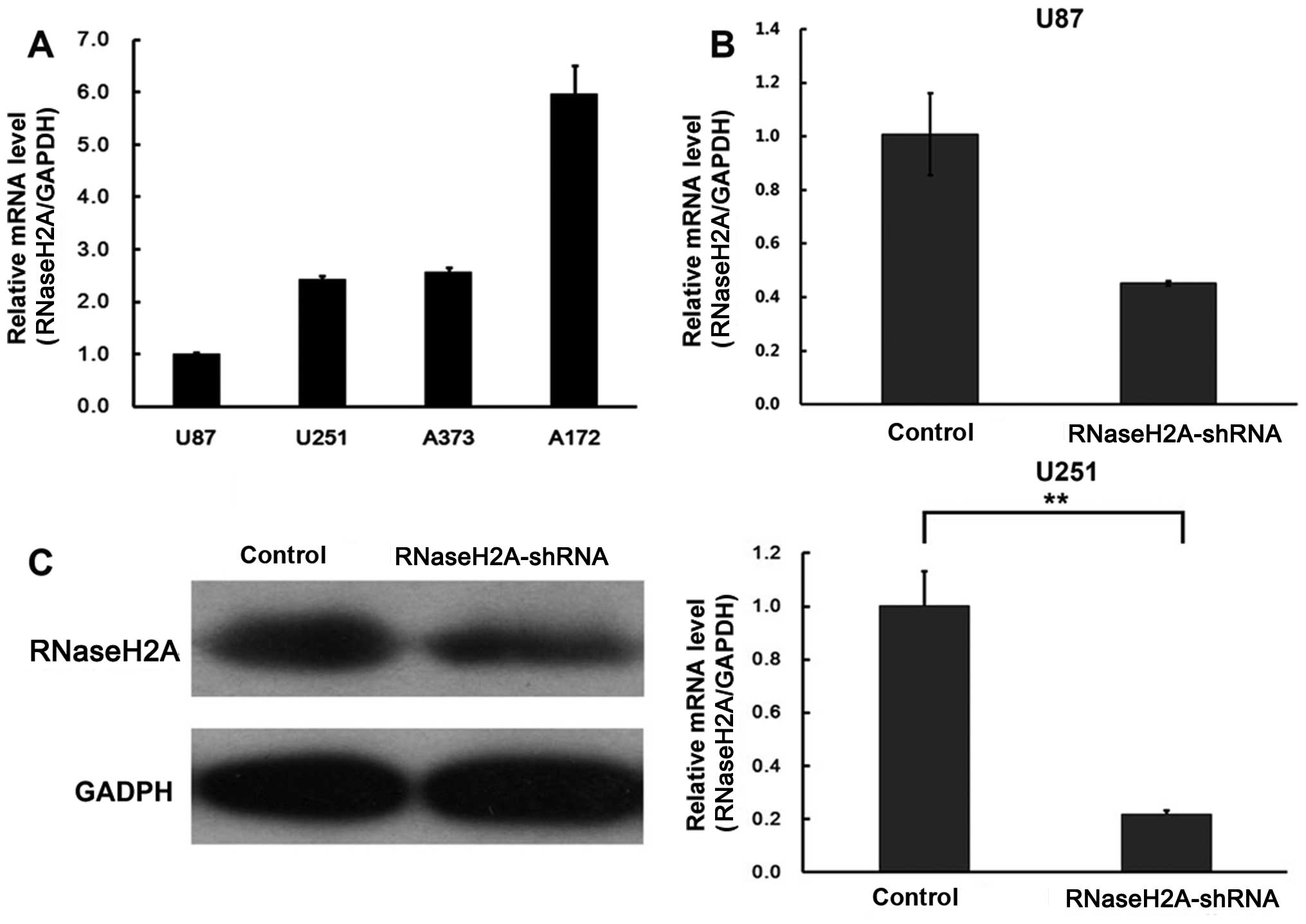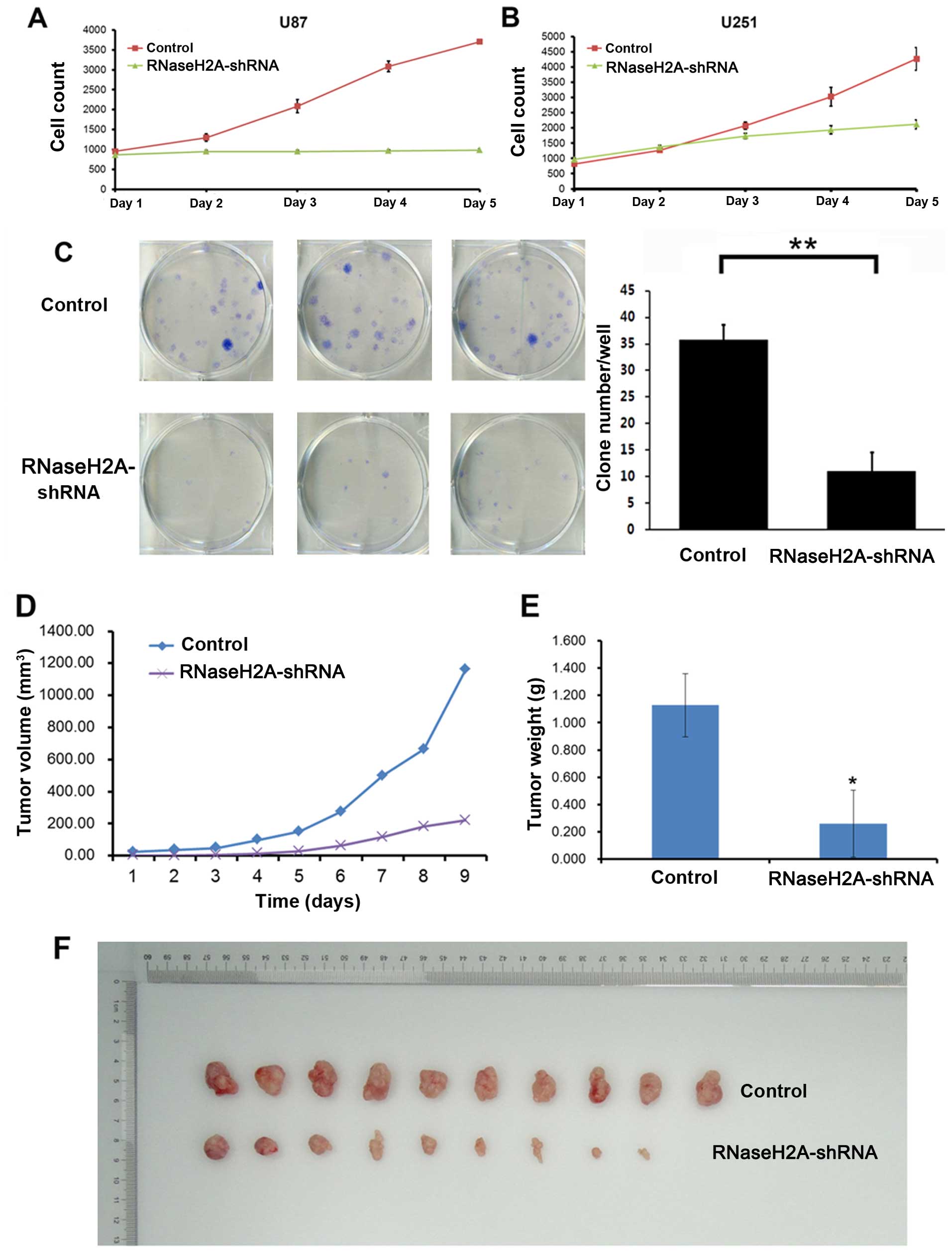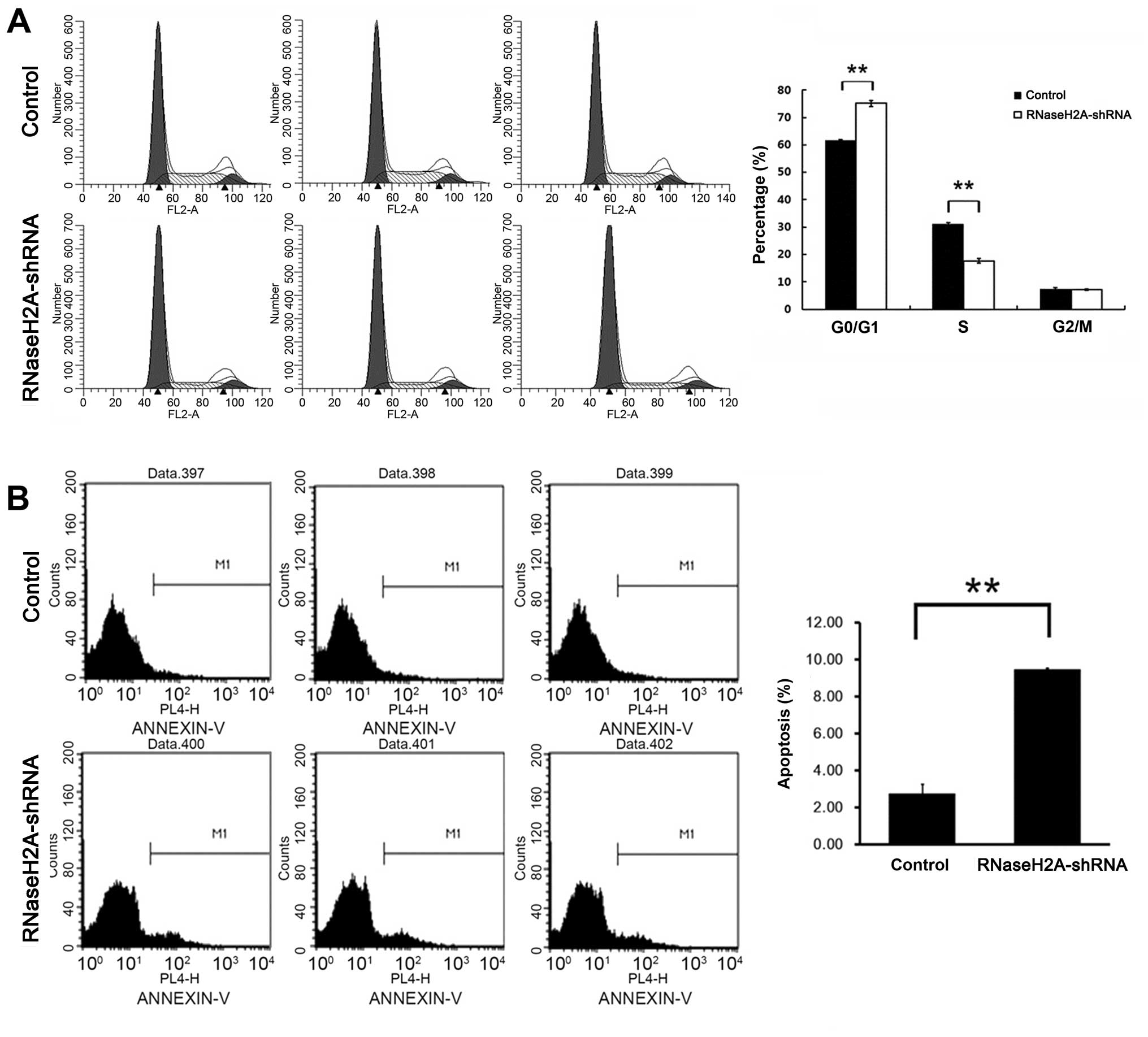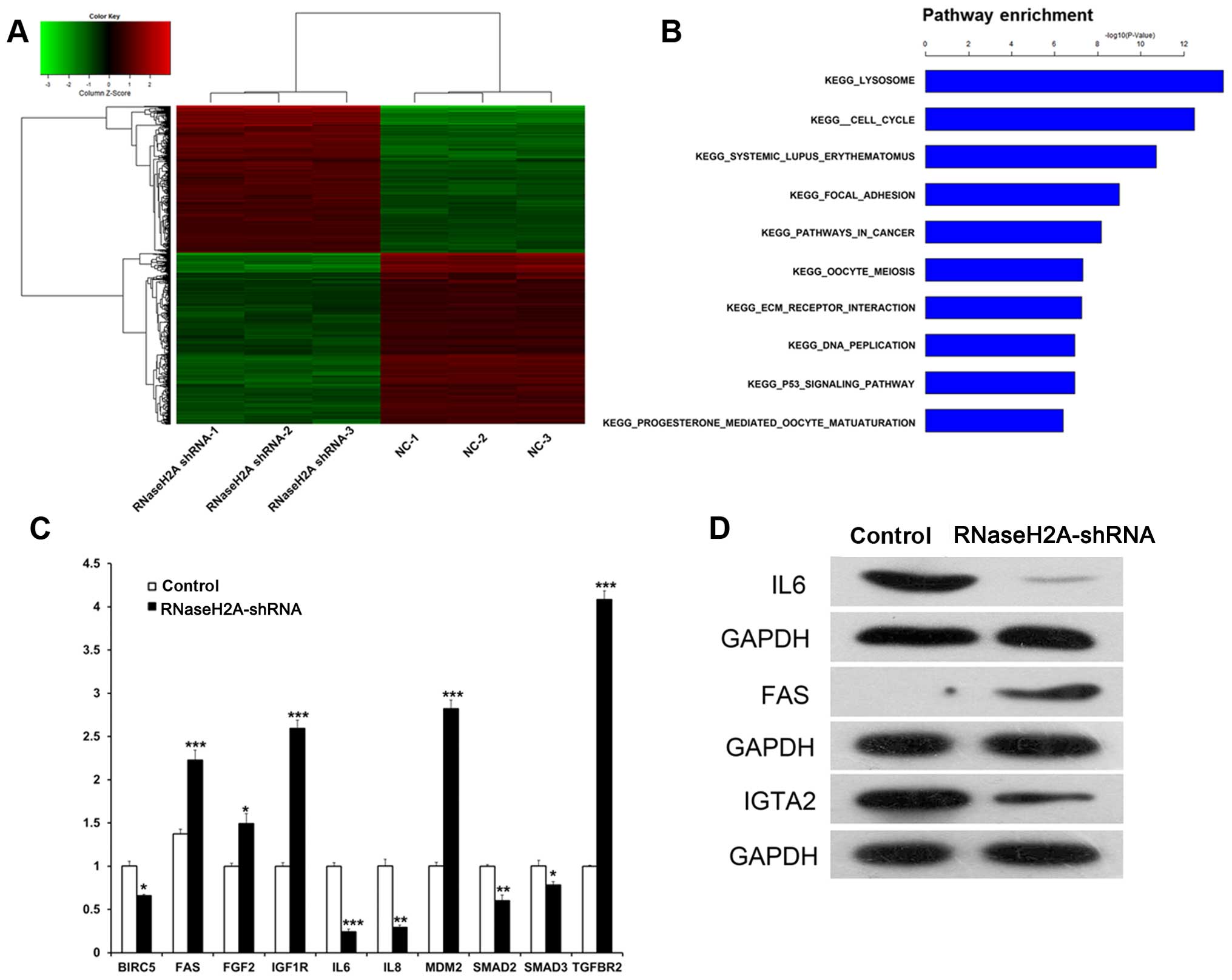|
1
|
Adamczyk LA, Williams H, Frankow A, Ellis
HP, Haynes HR, Perks C, Holly JM and Kurian KM: Current
understanding of circulating tumor cells–potential value in
malignancies of the central nervous system. Front Neurol.
6:1742015. View Article : Google Scholar
|
|
2
|
Aparicio-Blanco J and Torres-Suárez AI:
Glioblastoma multiforme and lipid nanocapsules: a review. J Biomed
Nanotechnol. 11:1283–1311. 2015. View Article : Google Scholar : PubMed/NCBI
|
|
3
|
Cuddapah VA, Robel S, Watkins S and
Sontheimer H: A neurocentric perspective on glioma invasion. Nat
Rev Neurosci. 15:455–465. 2014. View
Article : Google Scholar : PubMed/NCBI
|
|
4
|
Errico A: CNS cancer: new options for
glioblastoma. Nat Rev Clin Oncol. 11:1242014.PubMed/NCBI
|
|
5
|
Parsons DW, Jones S, Zhang X, Lin JC,
Leary RJ, Angenendt P, Mankoo P, Carter H, Siu IM, Gallia GL, et
al: An integrated genomic analysis of human glioblastoma
multiforme. Science. 321:1807–1812. 2008. View Article : Google Scholar : PubMed/NCBI
|
|
6
|
Westphal M and Lamszus K: Circulating
biomarkers for gliomas. Nat Rev Neurol. 11:556–566. 2015.
View Article : Google Scholar : PubMed/NCBI
|
|
7
|
Zhang ZZ, Shields LB, Sun DA, Zhang YP,
Hunt MA and Shields CB: The art of intraoperative glioma
identification. Front Oncol. 5:1752015. View Article : Google Scholar : PubMed/NCBI
|
|
8
|
Samdani AF, Torre-Healy A, Khalessi A,
McGirt M, Jallo GI and Carson B: Intraventricular ganglioglioma: a
short illustrated review. Acta Neurochir (Wien). 151:635–640. 2009.
View Article : Google Scholar
|
|
9
|
Gautschi OP, van Leyen K, Cadosch D,
Hildebrandt G and Fournier JY: Fluorescence guided resection of
malignant brain tumors-breakthrough in the surgery of brain tumors.
Praxis Bern (1994). 98:643–647. 2009.In German. View Article : Google Scholar
|
|
10
|
Signorelli F, Guyotat J, Elisevich K and
Barbagallo GM: Review of current microsurgical management of
insular gliomas. Acta Neurochir (Wien). 152:19–26. 2010. View Article : Google Scholar
|
|
11
|
Bello L, Fava E, Carrabba G, Papagno C and
Gaini SM: Present day's standards in microsurgery of low-grade
gliomas. Adv Tech Stand Neurosurg. 35:113–157. 2010.PubMed/NCBI
|
|
12
|
Furnari FB, Fenton T, Bachoo RM, Mukasa A,
Stommel JM, Stegh A, Hahn WC, Ligon KL, Louis DN, Brennan C, et al:
Malignant astrocytic glioma: genetics, biology, and paths to
treatment. Genes Dev. 21:2683–2710. 2007. View Article : Google Scholar : PubMed/NCBI
|
|
13
|
Lacroix M, Abi-Said D, Fourney DR,
Gokaslan ZL, Shi W, DeMonte F, Lang FF, McCutcheon IE, Hassenbusch
SJ, Holland E, et al: A multivariate analysis of 416 patients with
glioblastoma multiforme: prognosis, extent of resection, and
survival. J Neurosurg. 95:190–198. 2001. View Article : Google Scholar
|
|
14
|
Ohgaki H and Kleihues P: Genetic
alterations and signaling pathways in the evolution of gliomas.
Cancer Sci. 100:2235–2241. 2009. View Article : Google Scholar : PubMed/NCBI
|
|
15
|
Marumoto T and Saya H: Molecular biology
of glioma. Adv Exp Med Biol. 746:2–11. 2012. View Article : Google Scholar : PubMed/NCBI
|
|
16
|
Patel M, Vogelbaum MA, Barnett GH, Jalali
R and Ahluwalia MS: Molecular targeted therapy in recurrent
glioblastoma: current challenges and future directions. Expert Opin
Investig Drugs. 21:1247–1266. 2012. View Article : Google Scholar : PubMed/NCBI
|
|
17
|
Spasic M, Chow F, Tu C, Nagasawa DT and
Yang I: Molecular characteristics and pathways of Avastin for the
treatment of glioblastoma multiforme. Neurosurg Clin N Am.
23:417–427. 2012. View Article : Google Scholar : PubMed/NCBI
|
|
18
|
Zhu JJ and Wong ET: Personalized medicine
for glioblastoma: current challenges and future opportunities. Curr
Mol Med. 13:358–367. 2013.PubMed/NCBI
|
|
19
|
Goodenberger ML and Jenkins RB: Genetics
of adult glioma. Cancer Genet. 205:613–621. 2012. View Article : Google Scholar : PubMed/NCBI
|
|
20
|
Assi H, Candolfi M, Baker G, Mineharu Y,
Lowenstein PR and Castro MG: Gene therapy for brain tumors: basic
developments and clinical implementation. Neurosci Lett. 527:71–77.
2012. View Article : Google Scholar : PubMed/NCBI
|
|
21
|
Carén H, Pollard SM and Beck S: The good,
the bad and the ugly: epigenetic mechanisms in glioblastoma. Mol
Aspects Med. 34:849–862. 2013. View Article : Google Scholar :
|
|
22
|
Rizzo D, Ruggiero A, Martini M, Rizzo V,
Maurizi P and Riccardi R: Molecular biology in pediatric high-grade
glioma: impact on prognosis and treatment. BioMed Res Int.
2015:2151352015. View Article : Google Scholar : PubMed/NCBI
|
|
23
|
Mischel PS and Cloughesy TF: Targeted
molecular therapy of GBM. Brain Pathol. 13:52–61. 2003. View Article : Google Scholar : PubMed/NCBI
|
|
24
|
Zhang L, Chen LH, Wan H, Yang R, Wang Z,
Feng J, Yang S, Jones S, Wang S, Zhou W, et al: Exome sequencing
identifies somatic gain-of-function PPM1D mutations in brainstem
gliomas. Nat Genet. 46:726–730. 2014. View
Article : Google Scholar : PubMed/NCBI
|
|
25
|
Wan W, Xu X, Jia G, Li W, Wang J, Ren T,
Wu Z, Zhang J, Zhang L and Lu Y: Differential expression of p42.3
in low- and high-grade gliomas. World J Surg Oncol. 12:1852014.
View Article : Google Scholar : PubMed/NCBI
|
|
26
|
Melton C, Reuter JA, Spacek DV and Snyder
M: Recurrent somatic mutations in regulatory regions of human
cancer genomes. Nat Genet. 47:710–716. 2015. View Article : Google Scholar : PubMed/NCBI
|
|
27
|
Peters I, Tezval H, Kramer MW, Wolters M,
Grünwald V, Kuczyk MA and Serth J: Implications of TCGA network
data on 2nd generation immunotherapy concepts based on PD-L1 and
PD-1 target structures. Aktuelle Urol. 46:481–485. 2015.In German.
PubMed/NCBI
|
|
28
|
Chen X, Shi K, Wang Y, Song M, Zhou W, Tu
H and Lin Z: Clinical value of integrated-signature miRNAs in
colorectal cancer: miRNA expression profiling analysis and
experimental validation. Oncotarget. 6:37544–37556. 2015.PubMed/NCBI
|
|
29
|
Moelling K and Broecker F: The reverse
transcriptase-RNase H: from viruses to antiviral defense. Ann NY
Acad Sci. 1341:126–135. 2015. View Article : Google Scholar : PubMed/NCBI
|
|
30
|
Natiq A, Elalaoui SC, Miesch S, Bonnet C,
Jonveaux P, Amzazi S and Sefiani A: A new case of de novo
19p13.2p13.12 deletion in a girl with overgrowth and severe
developmental delay. Mol Cytogenet. 7:402014. View Article : Google Scholar : PubMed/NCBI
|
|
31
|
Flanagan JM, Funes JM, Henderson S, Wild
L, Carey N and Boshoff C: Genomics screen in transformed stem cells
reveals RNASEH2A, PPAP2C, and ADARB1 as putative anticancer drug
targets. Mol Cancer Ther. 8:249–260. 2009. View Article : Google Scholar : PubMed/NCBI
|
|
32
|
Feng S and Cao Z: Is the role of human
RNase H2 restricted to its enzyme activity? Prog Biophys Mol Biol.
Nov 19–2015.Epub ahead of print. PubMed/NCBI
|
|
33
|
Reijns MA, Bubeck D, Gibson LC, Graham SC,
Baillie GS, Jones EY and Jackson AP: The structure of the human
RNase H2 complex defines key interaction interfaces relevant to
enzyme function and human disease. J Biol Chem. 286:10530–10539.
2011. View Article : Google Scholar :
|
|
34
|
Hausen P and Stein H: Ribonuclease H. An
enzyme degrading the RNA moiety of DNA-RNA hybrids. Eur J Biochem.
14:278–283. 1970. View Article : Google Scholar : PubMed/NCBI
|
|
35
|
Stein H and Hausen P: Enzyme from calf
thymus degrading the RNA moiety of DNA-RNA hybrids: effect on
DNA-dependent RNA polymerase. Science. 166:393–395. 1969.
View Article : Google Scholar : PubMed/NCBI
|
|
36
|
Coté ML and Roth MJ: Murine leukemia virus
reverse transcriptase: structural comparison with HIV-1 reverse
transcriptase. Virus Res. 134:186–202. 2008. View Article : Google Scholar : PubMed/NCBI
|
|
37
|
Mizuno M, Yasukawa K and Inouye K: Insight
into the mechanism of the stabilization of moloney murine leukaemia
virus reverse transcriptase by eliminating RNase H activity. Biosci
Biotechnol Biochem. 74:440–442. 2010. View Article : Google Scholar : PubMed/NCBI
|
|
38
|
Schultz SJ and Champoux JJ: RNase H
activity: structure, specificity, and function in reverse
transcription. Virus Res. 134:86–103. 2008. View Article : Google Scholar : PubMed/NCBI
|
|
39
|
Rice GI, Forte GM, Szynkiewicz M, Chase
DS, Aeby A, Abdel-Hamid MS, Ackroyd S, Allcock R, Bailey KM,
Balottin U, et al: Assessment of interferon-related biomarkers in
Aicardi-Goutières syndrome associated with mutations in TREX1,
RNASEH2A, RNASEH2B, RNASEH2C, SAMHD1, and ADAR: a case-control
study. Lancet Neurol. 12:1159–1169. 2013. View Article : Google Scholar : PubMed/NCBI
|
|
40
|
Orcesi S, La Piana R and Fazzi E:
Aicardi-Goutieres syndrome. Br Med Bull. 89:183–201. 2009.
View Article : Google Scholar : PubMed/NCBI
|
|
41
|
Crow YJ: Aicardi-Goutières syndrome. Handb
Clin Neurol. 113:1629–1635. 2013. View Article : Google Scholar
|
|
42
|
Crow YJ and Manel N: Aicardi-Goutières
syndrome and the type I interferonopathies. Nat Rev Immunol.
15:429–440. 2015. View Article : Google Scholar : PubMed/NCBI
|
|
43
|
Williams KA, Lee M, Hu Y, Andreas J, Patel
SJ, Zhang S, Chines P, Elkahloun A, Chandrasekharappa S, Gutkind
JS, et al: A systems genetics approach identifies CXCL14, ITGAX,
and LPCAT2 as novel aggressive prostate cancer susceptibility
genes. PLoS Genet. 10:e10048092014. View Article : Google Scholar : PubMed/NCBI
|
|
44
|
Livak KJ and Schmittgen TD: Analysis of
relative gene expression data using real-time quantitative PCR and
the 2−ΔΔCT Method. Methods. 25:402–408. 2001. View Article : Google Scholar
|
|
45
|
Dai B, Wan W, Zhang P, Zhang Y, Pan C,
Meng G, Xiao X, Wu Z, Jia W, Zhang J, et al: SET and MYND
domain-containing protein 3 is overexpressed in human glioma and
contributes to tumorigenicity. Oncol Rep. 34:2722–2730.
2015.PubMed/NCBI
|
|
46
|
Yun K, Fidler AE, Eccles MR and Reeve AE:
Insulin-like growth factor II and WT1 transcript localization in
human fetal kidney and Wilms' tumor. Cancer Res. 53:5166–5171.
1993.PubMed/NCBI
|
|
47
|
Pritchard-Jones RO, Dunn DB, Qiu Y, Varey
AH, Orlando A, Rigby H, Harper SJ and Bates DO: Expression of
VEGFxxxb, the inhibitory isoforms of VEGF, in malignant
melanoma. Br J Cancer. 97:223–230. 2007. View Article : Google Scholar : PubMed/NCBI
|
|
48
|
Ismail PM, Lu T and Sawadogo M: Loss of
USF transcriptional activity in breast cancer cell lines. Oncogene.
18:5582–5591. 1999. View Article : Google Scholar : PubMed/NCBI
|
|
49
|
Macé K, Aguilar F, Wang JS, Vautravers P,
Gómez-Lechón M, Gonzalez FJ, Groopman J, Harris CC and Pfeifer AM:
Aflatoxin B1-induced DNA adduct formation and p53
mutations in CYP450-expressing human liver cell lines.
Carcinogenesis. 18:1291–1297. 1997. View Article : Google Scholar
|
|
50
|
Cox C, Bignell G, Greenman C, Stabenau A,
Warren W, Stephens P, Davies H, Watt S, Teague J, Edkins S, et al:
A survey of homozygous deletions in human cancer genomes. Proc Natl
Acad Sci USA. 102:4542–4547. 2005. View Article : Google Scholar : PubMed/NCBI
|
|
51
|
Doyle GA, Bourdeau-Heller JM, Coulthard S,
Meisner LF and Ross J: Amplification in human breast cancer of a
gene encoding a c-myc mRNA-binding protein. Cancer Res.
60:2756–2759. 2000.PubMed/NCBI
|
|
52
|
Suswam E, Li Y, Zhang X, Gillespie GY, Li
X, Shacka JJ, Lu L, Zheng L and King PH: Tristetraprolin
down-regulates interleukin-8 and vascular endothelial growth factor
in malignant glioma cells. Cancer Res. 68:674–682. 2008. View Article : Google Scholar : PubMed/NCBI
|
|
53
|
Lai WS, Kennington EA and Blackshear PJ:
Tristetraprolin and its family members can promote the cell-free
deadenylation of AU-rich element-containing mRNAs by poly(A)
ribonuclease. Mol Cell Biol. 23:3798–3812. 2003. View Article : Google Scholar : PubMed/NCBI
|
|
54
|
Zhang K, Dion N, Fuchs B, Damron T,
Gitelis S, Irwin R, O'Connor M, Schwartz H, Scully SP, Rock MG, et
al: The human homolog of yeast SEP1 is a novel candidate tumor
suppressor gene in osteogenic sarcoma. Gene. 298:121–127. 2002.
View Article : Google Scholar : PubMed/NCBI
|
|
55
|
Rökman A, Ikonen T, Seppälä EH, Nupponen
N, Autio V, Mononen N, Bailey-Wilson J, Trent J, Carpten J,
Matikainen MP, et al: Germline alterations of the RNASEL gene, a
candidate HPC1 gene at 1q25, in patients and families with prostate
cancer. Am J Hum Genet. 70:1299–1304. 2002. View Article : Google Scholar : PubMed/NCBI
|
|
56
|
Krüger S, Silber AS, Engel C, Görgens H,
Mangold E, Pagenstecher C, Holinski-Feder E, von Knebel Doeberitz
M, Moeslein G, Dietmaier W, et al German Hereditary Non-Polyposis
Colorectal Cancer Consortium: Arg462Gln sequence variation in the
prostate-cancer-susceptibility gene RNASEL and age of onset of
hereditary non-polyposis colorectal cancer: a case-control study.
Lancet Oncol. 6:566–572. 2005. View Article : Google Scholar : PubMed/NCBI
|
|
57
|
Bartsch DK, Fendrich V, Slater EP,
Sina-Frey M, Rieder H, Greenhalf W, Chaloupka B, Hahn SA,
Neoptolemos JP and Kress R: RNASEL germline variants are associated
with pancreatic cancer. Int J Cancer. 117:718–722. 2005. View Article : Google Scholar : PubMed/NCBI
|
|
58
|
Shook SJ, Beuten J, Torkko KC,
Johnson-Pais TL, Troyer DA, Thompson IM and Leach RJ: Association
of RNASEL variants with prostate cancer risk in Hispanic Caucasians
and African Americans. Clin Cancer Res. 13:5959–5964. 2007.
View Article : Google Scholar : PubMed/NCBI
|
|
59
|
Rennert H, Zeigler-Johnson CM, Addya K,
Finley MJ, Walker AH, Spangler E, Leonard DG, Wein A, Malkowicz SB
and Rebbeck TR: Association of susceptibility alleles in
ELAC2/HPC2, RNASEL/HPC1, and MSR1 with prostate cancer severity in
European American and African American men. Cancer Epidemiol
Biomarkers Prev. 14:949–957. 2005. View Article : Google Scholar : PubMed/NCBI
|
|
60
|
Sidrauski C and Walter P: The
transmembrane kinase Ire1p is a site-specific endonuclease that
initiates mRNA splicing in the unfolded protein response. Cell.
90:1031–1039. 1997. View Article : Google Scholar : PubMed/NCBI
|
|
61
|
Davies MP, Barraclough DL, Stewart C,
Joyce KA, Eccles RM, Barraclough R, Rudland PS and Sibson DR:
Expression and splicing of the unfolded protein response gene XBP-1
are significantly associated with clinical outcome of
endocrine-treated breast cancer. Int J Cancer. 123:85–88. 2008.
View Article : Google Scholar : PubMed/NCBI
|
|
62
|
Sugito N, Ishiguro H, Kuwabara Y, Kimura
M, Mitsui A, Kurehara H, Ando T, Mori R, Takashima N, Ogawa R, et
al: RNASEN regulates cell proliferation and affects survival in
esophageal cancer patients. Clin Cancer Res. 12:7322–7328. 2006.
View Article : Google Scholar : PubMed/NCBI
|
|
63
|
Muralidhar B, Goldstein LD, Ng G, Winder
DM, Palmer RD, Gooding EL, Barbosa-Morais NL, Mukherjee G, Thorne
NP, Roberts I, et al: Global microRNA profiles in cervical squamous
cell carcinoma depend on Drosha expression levels. J Pathol.
212:368–377. 2007. View Article : Google Scholar : PubMed/NCBI
|
|
64
|
Kaul D and Sikand K: Defective
RNA-mediated c-myc gene silencing pathway in Burkitt's lymphoma.
Biochem Biophys Res Commun. 313:552–554. 2004. View Article : Google Scholar
|
|
65
|
Flavin RJ, Smyth PC, Finn SP, Laios A,
O'Toole SA, Barrett C, Ring M, Denning KM, Li J, Aherne ST, et al:
Altered eIF6 and Dicer expression is associated with
clinicopathological features in ovarian serous carcinoma patients.
Mod Pathol. 21:676–684. 2008. View Article : Google Scholar : PubMed/NCBI
|
|
66
|
Chiosea S, Jelezcova E, Chandran U,
Acquafondata M, McHale T, Sobol RW and Dhir R: Up-regulation of
dicer, a component of the MicroRNA machinery, in prostate
adenocarcinoma. Am J Pathol. 169:1812–1820. 2006. View Article : Google Scholar : PubMed/NCBI
|
|
67
|
Chiosea S, Jelezcova E, Chandran U, Luo J,
Mantha G, Sobol RW and Dacic S: Overexpression of Dicer in
precursor lesions of lung adenocarcinoma. Cancer Res. 67:2345–2350.
2007. View Article : Google Scholar : PubMed/NCBI
|
|
68
|
Chiosea SI, Barnes EL, Lai SY, Egloff AM,
Sargent RL, Hunt JL and Seethala RR: Mucoepidermoid carcinoma of
upper aerodigestive tract: clinicopathologic study of 78 cases with
immunohistochemical analysis of Dicer expression. Virchows Arch.
452:629–635. 2008. View Article : Google Scholar : PubMed/NCBI
|
|
69
|
Wang H, Lathia JD, Wu Q, Wang J, Li Z,
Heddleston JM, Eyler CE, Elderbroom J, Gallagher J, Schuschu J, et
al: Targeting interleukin 6 signaling suppresses glioma stem cell
survival and tumor growth. Stem Cells. 27:2393–2404. 2009.
View Article : Google Scholar : PubMed/NCBI
|
|
70
|
Chang CY, Li MC, Liao SL, Huang YL, Shen
CC and Pan HC: Prognostic and clinical implication of IL-6
expression in glioblastoma multiforme. J Clin Neurosci. 12:930–933.
2005. View Article : Google Scholar : PubMed/NCBI
|
|
71
|
Goswami S, Gupta A and Sharma SK:
Interleukin-6-mediated autocrine growth promotion in human
glioblastoma multiforme cell line U87MG. J Neurochem. 71:1837–1845.
1998. View Article : Google Scholar : PubMed/NCBI
|
|
72
|
Green DR and Llambi F: Cell Death
Signaling. Cold Spring Harb Perspect Biol. 7:2015.pii: a006080.
View Article : Google Scholar : PubMed/NCBI
|
|
73
|
Frei K, Ambar B, Adachi N, Yonekawa Y and
Fontana A: Ex vivo malignant glioma cells are sensitive to Fas
(CD95/APO-1) ligand-mediated apoptosis. J Neuroimmunol. 87:105–113.
1998. View Article : Google Scholar : PubMed/NCBI
|
|
74
|
Gratas C, Tohma Y, Van Meir EG, Klein M,
Tenan M, Ishii N, Tachibana O, Kleihues P and Ohgaki H: Fas ligand
expression in glioblastoma cell lines and primary astrocytic brain
tumors. Brain Pathol. 7:863–869. 1997. View Article : Google Scholar : PubMed/NCBI
|


















